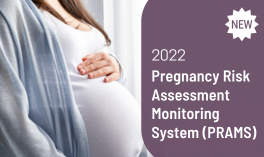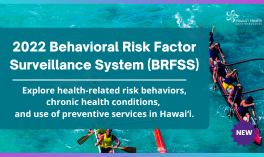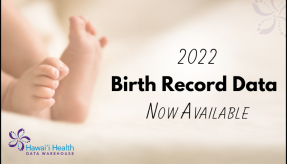The 2019 Pregnancy Risk Assessment and Monitoring Survey (PRAMS) data are now available in Hawaii-IBIS. The PRAMS is an annual mixed mode survey of women who have recently given birth in Hawai‘i. PRAMS provides population-based data on maternal attitudes and experiences before, during and shortly after pregnancy. Use the Hawaii-IBIS PRAMS data tool to explore over 90 health indicators of state and county level. Data can be viewed by 13 different dimensions.
Here are some highlights from the 2019 Hawaii PRAMS:
- 32% of women reported getting a flu shot in the 12 months before delivery, a significant increase from 19% in 2012. Flu shots given during pregnancy help protect both the mother and her baby from flu. Vaccination has been shown to reduce the risk of flu-associated acute respiratory infection in pregnant women by up to one-half.
- About 50% of women reported taking prenatal vitamins, multivitamins or a folic acid vitamin in the month before they got pregnant. Regular vitamin use before pregnancy has steadily increased from 34% in 2011 to 43% in 2019. Taking prenatal vitamins with folic acid decreases the risk of brain and spinal cord birth defects.
- Overall, 47% of women had their teeth cleaned by a dentist or dental hygienist during their pregnancy; however, the only 33% of new mothers in Hawaii County received a teeth cleaning compared to 50% of new mothers in Honolulu County. Since pregnancy increases the risk of gum disease and cavities, oral health is an important part of prenatal care.
- 94% of infants were offered breast milk at any point after birth, 81% were still breastfeeding at 8 weeks (any), and 55% of babies were still breastfeeding exclusively at 8 weeks. Breast milk is the most complete nutrition for a new baby, provides protection against many early-life diseases, and is associated with health benefits to mothers as well.
- When it is time to sleep, 84% of infants were laid on their backs, the rest were laid on the side (9%), stomach (5%) or more than one positions. Putting infants to sleep on their stomach or side, rather than their back increased their risk of suffocation and is a major preventable risk factor for sudden infant death syndrome (SIDS).
PRAMS is conducted by the Hawai‘i State Department of Health in conjunction with the Centers for Disease Control and Prevention (CDC). Due to extenuating circumstances, data collection was suspended in 2017 and 2018 and resumed in 2019. The 2019 survey participants were recruited from July to December 2019. Because of the smaller sample size, some indicators may not be reportable in 2019. In these cases, users can aggregate years to increase the sample size.
Updated: 04/27/2021



